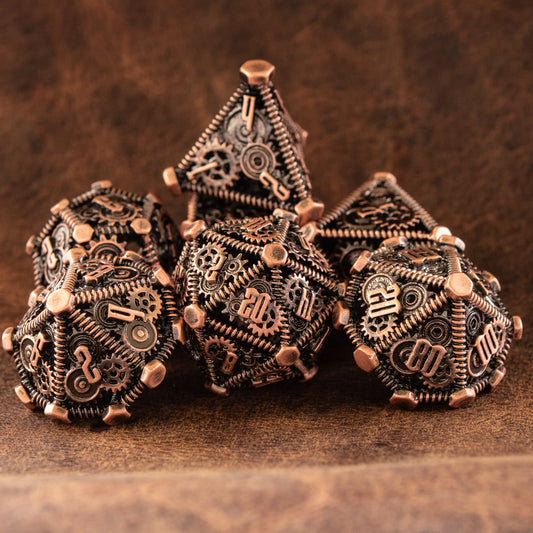When it comes to tabletop role-playing games (RPGs) like Dungeons & Dragons and various board games, dice play a crucial role in determining outcomes. Fair play requires that dice are balanced, meaning each face should have an equal chance of landing face up. But how can you determine if your dice are balanced? Here are some practical methods and tips to help you assess the balance of your dice in detail.
1. Visual Inspection
Start with a simple visual inspection to get a preliminary idea of your dice's balance. Here are key aspects to examine:
-
Shape:
- Is the shape of the die symmetrical? Look for any obvious deformities or imperfections on its surfaces. A perfectly balanced die should have uniform faces and edges.
-
Weight Distribution:
- Hold the die in your hand and feel its weight. Does it feel evenly distributed, or does it seem heavier on one side? Uneven weight distribution can cause the die to favor certain faces.
-
Surface Quality:
- Inspect the surfaces for any dents, scratches, or uneven finishes. Imperfections can affect how the die rolls. Pay special attention to the corners and edges, as these areas are more prone to wear and tear.
2. Float Test
The float test is a popular method to check the balance of dice:
-
Materials Needed:
- A transparent container filled with water (a bowl or glass will do).
- A few drops of liquid soap or salt to increase water density.
-
Procedure:
- Drop the die into the water.
- Add a few drops of liquid soap or salt to increase the water’s density, making the die float more easily.
- Observe the die as it floats. A balanced die will not consistently float with the same face up. If one face repeatedly comes to the surface, it may indicate an imbalance. Rotate the die and repeat the test several times to confirm the results.
3. Rolling Test
Performing a rolling test can help you assess the fairness of your dice over multiple rolls:
-
Materials Needed:
- A flat, smooth surface.
- A notebook or spreadsheet to record results.
-
Procedure:
- Roll the die a significant number of times (at least 100 rolls) to get a reliable sample size. The more rolls you perform, the more accurate your results will be.
- Record the result of each roll.
- Analyze the data: Each face should appear approximately the same number of times. Significant deviations may indicate an imbalance. Calculate the percentage of times each face appears and compare it to the expected value (e.g., for a six-sided die, each face should appear about 16.67% of the time).
4. Statistical Analysis
For a more scientific approach, you can use statistical analysis to evaluate your dice:
-
Chi-Square Test:
- Collect roll data from the rolling test.
- Use a chi-square statistical test to determine if the observed frequencies of each face match the expected frequencies. This test can help identify statistically significant imbalances. Use online calculators or statistical software to perform the chi-square test.
-
Software Tools:
- Use software tools or online calculators for the chi-square test. Input your observed frequencies and compare them against the expected frequencies for fair dice. Look for p-values that indicate whether the deviations are due to chance or a significant imbalance.
5. Micrometer Measurement
Using a micrometer can provide precise measurements of your dice to ensure each face is the same size:
-
Materials Needed:
- A micrometer or caliper.
-
Procedure:
- Measure each face of the die to check for consistency. Record the measurements and compare them. A balanced die should have faces of equal size, with minimal variation.
6. Professional Calibration
For those who are serious about ensuring their dice are perfectly balanced, professional calibration services are available:
-
Dice Calibration Services:
- Some companies specialize in calibrating and testing dice for balance. These services use precise equipment to measure and adjust the balance of your dice. Consider sending your dice to these professionals for thorough testing.
-
High-Quality Dice:
- Consider purchasing dice from reputable manufacturers known for producing well-balanced dice. High-quality dice are often more reliable and undergo rigorous testing during manufacturing.
7. Powder Test
The powder test is another effective method to check for imbalances:
-
Materials Needed:
- A fine powder such as talcum powder or cornstarch.
- A flat surface.
-
Procedure:
- Sprinkle a thin layer of powder on a flat surface.
- Roll the die several times through the powder.
- Observe the accumulation of powder on the die. If more powder accumulates on certain faces or edges, it may indicate an imbalance.
Conclusion
Ensuring your dice are balanced is crucial for fair and enjoyable gameplay. By using these methods—visual inspection, float test, rolling test, statistical analysis, micrometer measurement, professional calibration, and powder test—you can determine the balance of your dice and ensure that your gaming experiences are fair and fun. Whether you’re a casual player or a serious gamer, balanced dice are essential for maintaining integrity in your games.
By following these tips, you can confidently assess the balance dice and enjoy a more equitable gaming experience. Remember, balanced dice lead to fair play, which ultimately enhances the enjoyment for everyone at the table.





